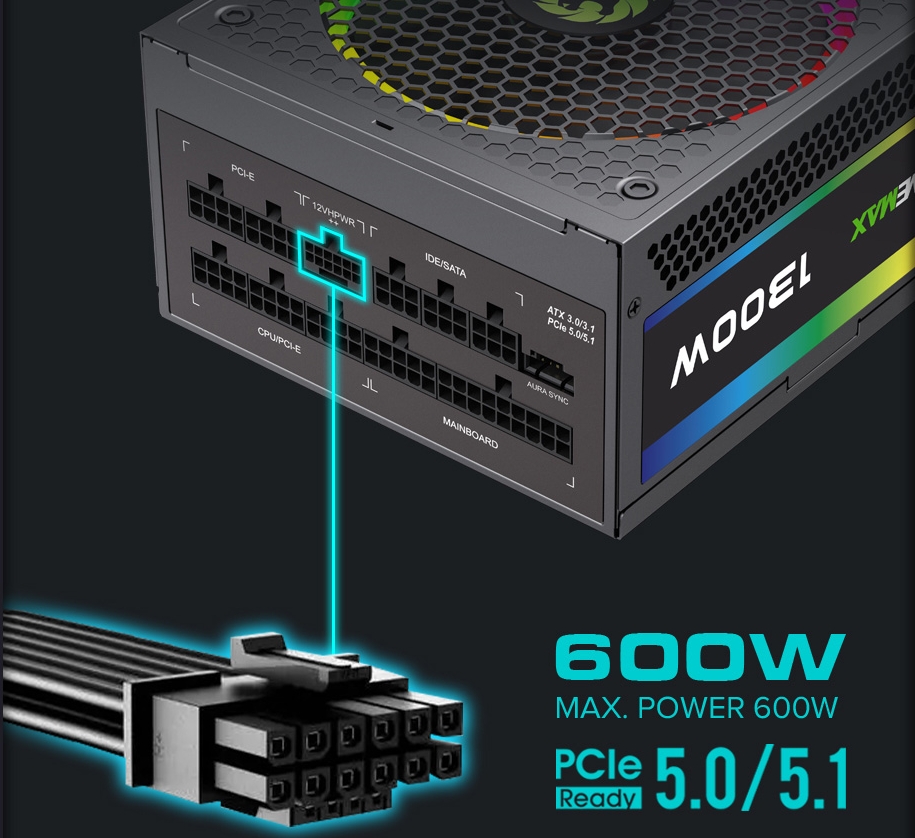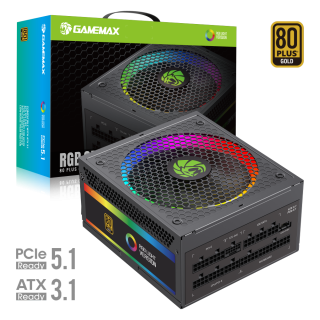When building or upgrading a gaming PC, one component that often doesn’t get enough attention is the power supply unit (PSU). While gamers typically focus on graphics cards, CPUs, and cooling solutions, the PSU plays a critical role in ensuring your system runs smoothly and efficiently. In this article, we’ll explore the importance of selecting the right PSU for your gaming rig, factors to consider, and tips for making the best choice—while highlighting the growing trend of RGB power supplies that cater to aesthetic preferences.

Stability and Reliability: A quality PSU provides consistent power, which is crucial for maintaining stability during demanding gaming sessions. Insufficient or unstable power can lead to crashes, freezes, and even hardware damage.
Component Protection: A reliable PSU often comes equipped with protective features, such as over-voltage, under-voltage, and short-circuit protection. These features safeguard your sensitive components from potential damage due to power fluctuations.
Efficiency and Cost Savings: An efficient PSU converts more of the AC power from your wall outlet into usable DC power for your system, which reduces wasted energy. Higher efficiency also translates to lower electricity bills and less heat generation, contributing to overall system longevity.
Future-Proofing: Gaming technology evolves rapidly, and so do power requirements. Investing in a PSU with a higher wattage than your current needs can accommodate future upgrades without necessitating a new power supply.
Aesthetic Appeal with RGB Lighting: For gaming enthusiasts, the visual appeal of a gaming rig is often just as important as performance. Many modern PSUs come with RGB lighting options, allowing you to customize the look of your build. The RGB effects can sync with other components, creating a cohesive and immersive gaming environment. Whether you prefer a static glow, pulsing effects, or dynamic color changes, RGB PSUs enhance the aesthetics of your setup, adding a personal touch and elevating your overall gaming experience.
Wattage Requirements: The first step in selecting a PSU is calculating the total wattage your gaming PC requires. This involves adding the wattage of all components, including the CPU, GPU, RAM, and additional peripherals. There are numerous online calculators available to help estimate your power needs based on your specific build.
Efficiency Ratings: PSUs are rated for efficiency, typically denoted by the 80 PLUS certification system. Look for units that are rated Bronze, Silver, Gold, Platinum, or Titanium. Higher ratings indicate better efficiency, meaning less energy waste and heat output. For gaming PCs, Gold or higher is often recommended.
Modularity: PSUs come in three types regarding cable management:
Non-modular: All cables are permanently attached, leading to a cluttered case.
Semi-modular: Essential cables are fixed, while others can be added as needed.
Fully modular: You can connect only the cables you need, promoting better airflow and organization.
Rails: Power supplies can have single or multiple rails. Single-rail PSUs deliver all power from one rail, while multi-rail PSUs distribute power across several rails. Multi-rail designs can help prevent overload on a single rail, which is beneficial for high-performance components.
Brand Reputation and Warranty: It’s essential to choose a PSU from a reputable brand known for quality and reliability. Look for models that come with a solid warranty—typically three to ten years—as this is often an indicator of the manufacturer’s confidence in their product.
Corsair RM850x: This fully modular PSU is 80 PLUS Gold certified, providing excellent efficiency and stable power delivery. With a wattage of 850W, it’s suitable for high-end gaming rigs and includes a ten-year warranty. Plus, its RGB options allow for a vibrant setup.

Power Supply RGB-750 PRO Fully Modular 80+ Gold Certified with RGB Light Mode ARGB SYNC.
• 750W Power: Fully modular, 80+ Gold Certified, 90% efficiency
• Advanced Design: LLC+DC-DC with powerful single +12V rail.
• Compatibility: Supports ATX 3.1, PCIe 5.1, 16-pin 12V-2*6 for latest GPUs.
• RGB Lighting: 140mm ARGB fan with 25 lighting modes, syncs with major motherboard brands.
• High-Quality Components: Japanese bulk capacitor for durability and stability.
• Quiet Cooling: 140mm ultra-quiet fan with automatic temperature control.
• Wireless Design: Wireless design for cleaner setup and better heat dissipation.
• Comprehensive Protection: OPP/OVP/UVP/SCP/OCP/SIP for stability and safety.
Preparation: Before installing the PSU, ensure your PC is powered off and unplugged. Open your case by removing the side panel to access the internal components.
Remove Old PSU (if applicable): If you’re replacing an existing PSU, disconnect all cables from the motherboard and components, then unscrew and remove the old unit.
Position the New PSU: Place the new PSU in the designated area of the case, typically at the bottom or top, and secure it with screws.
Connect Cables: Attach the 24-pin motherboard power cable, the 4/8-pin CPU power cable, and any additional cables for your GPU and storage devices.
Organize Cables: Use cable ties to keep cables organized, improving airflow and aesthetics within your case.
Close the Case and Test: After everything is connected, replace the side panel, plug in your PC, and power it on to test your new PSU.
Selecting the right power supply unit is a fundamental aspect of building a gaming PC. It ensures your system runs smoothly, protects components, and accommodates future upgrades. By understanding wattage requirements, efficiency ratings, modularity, and brand reputation, you can make an informed decision that enhances your gaming experience. The added bonus of RGB lighting allows you to customize your setup to reflect your personal style, making your gaming rig not just powerful, but also visually striking.